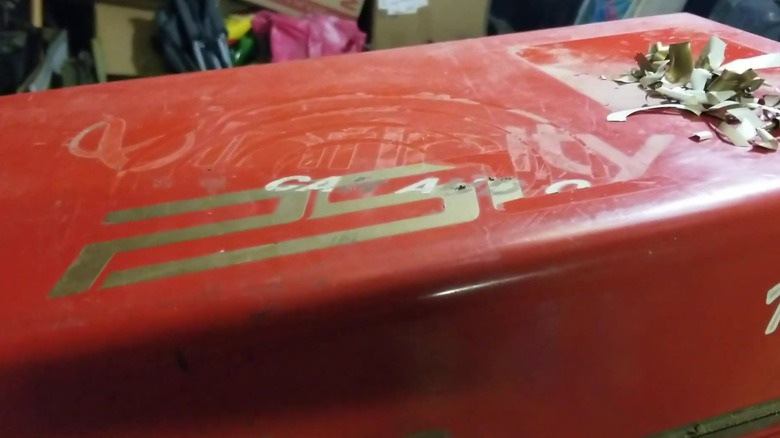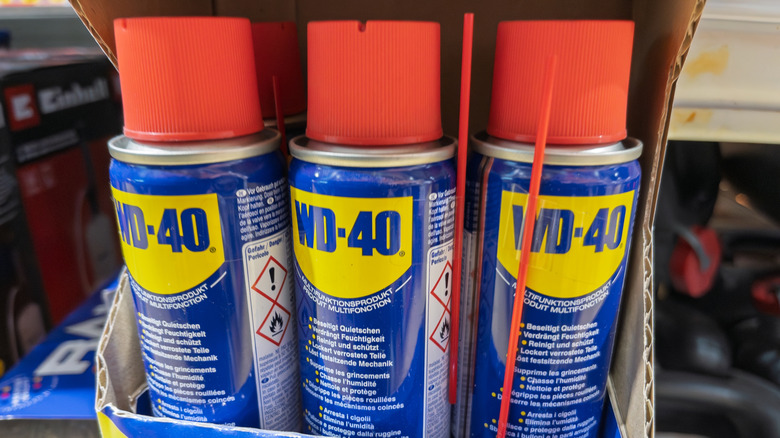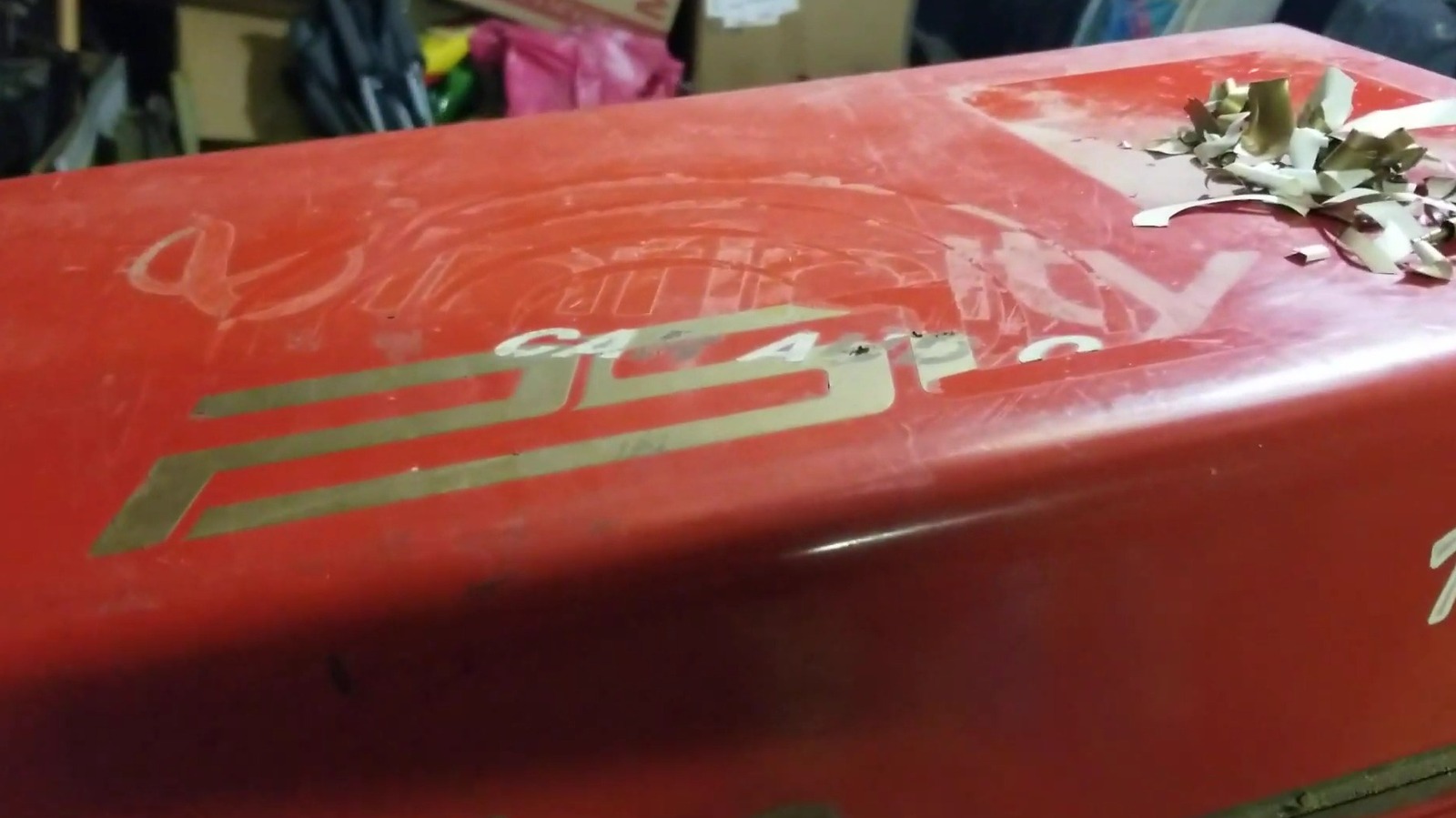 Thomas Shue's World/YouTube
Thomas Shue's World/YouTube
Metal toolboxes of all shapes and sizes tend to focus more on what's inside than on the outside. Thus, their exterior is often flat and blank, serving merely as a shell to house the various drawers and compartments that hold your tools and hardware. Many don't use this space, while others see it as an opportunity to customize. Such vast open spaces are perfect for magnets and, of course, stickers, to help individualize one's toolbox. The issue is that once a sticker is on, it typically doesn't want to let go, so you'll need more than a fingernail or two to remove it completely, adhesive and all.
Fortunately, you don't have to just scrape old stickers off your toolbox and hope for the best. As it turns out, the household staple WD-40 multi-use product is excellent at removing stickers and their residue — one of the many unexpected uses for WD-40. All you have to do is spray the sticker with the multi-use solution. The WD-40 should remain on the area for a few minutes, but once that time has passed, you should be able to peel the sticker off. If a residue remains, reapply and wipe it away with a rag or cloth after a few minutes. The chemical makeup of this WD-40 solution won't damage the paint or metal of your toolbox, either.
Sticker and residue removal is just one of many situations where WD-40 can be useful in a toolbox. The brand's product line is advertised as offering a range of benefits for your tool storage needs.
How else can WD-40 benefit toolboxes?
 VGV MEDIA/Shutterstock
VGV MEDIA/Shutterstock
Even if you don't have stickers or sticker adhesive to remove from your toolbox, there are other benefits you can get from the WD-40 multi-use product. Perhaps the most important is rust resistance. Over time, toolboxes are susceptible to rust and corrosion from continuous moisture exposure, leading to holes, paint peeling, and locks and hinges moving less fluidly. However, WD-40 is intended to prevent rust, so it only takes a quick spray coating to keep your toolbox protected. For areas already impacted by rust or corrosion, WD-40 can help, too. Clean the area, spray some WD-40 on it, scrub it with a brush until the rust is gone, wipe it clean, and reapply a final coat for protection.
If rust and sticker residue aren't concerns, it's not a bad idea to have WD-40 around your toolbox anyway. Should your toolbox and its contents become greasy or grimy over time, WD-40 can be used as a cleaner. WD-40 can come in handy if the hinges on your toolbox lid get squeaky or stop moving smoothly. Spray some on, then move the lid until it breaks free; reapply until it becomes as silent as possible and moves without issue. Just don't forget to wipe away an excess, as this is one of several common mistakes people often make when using WD-40 that can have inconvenient consequences.
From leftover sticker adhesive to rust spots, WD-40 can do a lot for your toolbox. It's no miracle product, but it seems intent on living up to its multi-purpose name.



